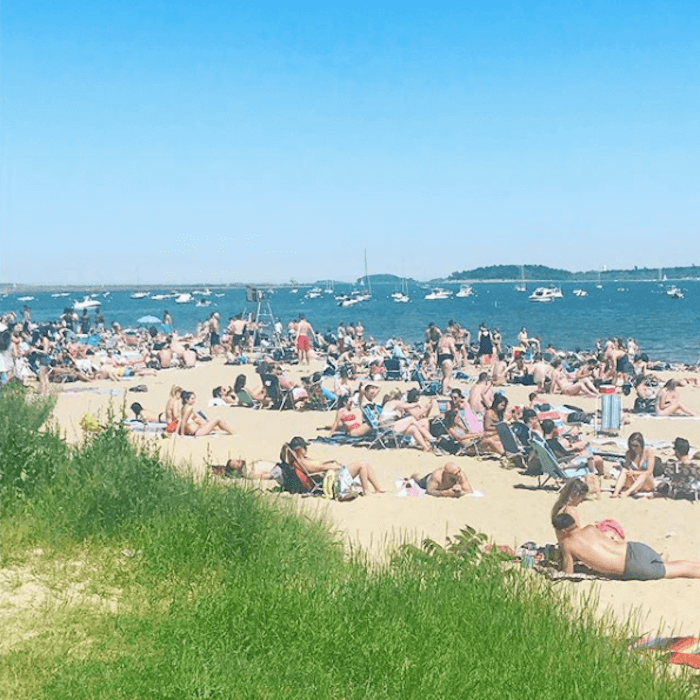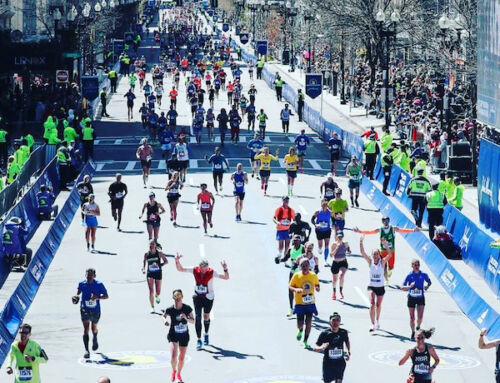On July 28, 2022 – Save the Harbor/Save the Bay issued a mid-summer special report on beach posting and flagging accuracy on the Bay State’s ocean beaches owned by the Commonwealth of Massachusetts. Based on their review of 1500 data points from 15 beaches from 2016 – 2021, the accuracy of postings required by the Department of Public Health on the Metropolitan Region’s public beaches ranged from a low of 0% to a maximum of 46%.
Though the mid-summer report focused on the Metropolitan Region’s public beaches, Save the Harbor/Save the Bay’s analysis suggests that this is a statewide problem, affecting nearly every ocean beach in Massachusetts.
Here are the results for the Boston Metropolitan Region’s 15 public beaches from the 2020 and 2021 beach seasons.
“It appears as if you would be better off flipping a coin than believing a red flag on our ocean beaches,” said Save the Harbor/Save the Bay’s Executive Director Chris Mancini. “The results are not surprising, but they are very disappointing. For example, half-way through the summer, 100% of the required postings and corresponding red flags on Constitution Beach in East Boston have been wrong.”
For this interim report, Save the Harbor’s policy staff examined the 2022 data posted on the Department of Public Health’s water quality locator website, as well as data from G&L Labs, who facilitates testing and posting for the Department of Conservation & Recreation.
Though the mid-summer special study focused on Constitution Beach in East Boston, Save the Harbor/Save the Bay also looked at all of the testing, posting and flagging data from 15 Boston Area beaches from Nahant to Nantasket from 2016 to 2021. Based on their preliminary analysis of more than 1500 data points, on average 80% of the postings and corresponding red flags have been wrong. In South Boston, accuracy at Carson, M St., City Point, and Pleasure Bay beaches ranged from 0% to 33% in 2021. At Carson Beach, accuracy was 25% in 2021. At M St. Beach, accuracy was 0% in 2021. At City Point Beach, accuracy was 0% in 2021. At Pleasure Bay, accuracy was 0% in 2021.
Though the Department of Public Health recently called the postings “near real time”, under the current posting protocol for the Metropolitan Beaches, and most of the Commonwealth’s other ocean beaches, results are posted at least a full day after the samples are taken, so they are always at least 24 hours old and out of date.
This situation is made worse by the fact that the information on the Department of Public Health’s water quality website (maintained by their Bureau of Environmental Health) is still only available in English, and the FAQ’s and site have not been updated since 2001, despite our repeated requests.
“Today Save the Harbor/Save the Bay is calling on Health and Human Services Secretary Marylou Sudders to instruct the Department of Public Health (DPH) to conduct a public and comprehensive review of posting accuracy on the Commonwealth’s Beaches,” said Mancini. “We are also calling for DPH and the Bureau of Environmental Health to do their jobs. It is time for them to update and translate their website as nearly every other state agency has done, and make accurate, timely information about current water quality on the Metropolitan Beaches available to all the region’s residents, no matter what language they speak.”
According to Save the Harbor/Save the Bay’s Director of Strategy and Communications, the non-profit advocacy group undertook this study when they realized during an annual data review that more than 80% of the postings on Constitution Beach were wrong in 2021, while 100% were wrong in 2020. “To suggest that posting outdated results that are nearly always wrong protects the public health in any way is simply silly,” said Berman. “The Department of Public Health and the Department of Conservation & Recreation must do better. Save the Harbor and our policy team and partners are ready to help.”
According to Save the Harbor Policy Assistant Caroline Adamson, a candidate for a MS in public health at Boston University’s School of Public Health, “Our preliminary analysis of the data since 2016 suggests that “precautionary postings” based on the previous day’s rainfall are more than twice accurate as the required postings for this beach (46% inaccurate vs. 80% inaccurate, or 54% vs 20% accurate).”
“In his very first order in the Boston Harbor Cleanup case, U.S. District Court Judge A. David Mazzone said that The Law secured to the People the Right to clean water,” said Mancini. “Inaccurate postings like these rob people, especially people in Environmental Justice communities like East Boston, of their right to enjoy the benefits of our enormous public investment in clean water.”
For more information about this study, contact Save the Harbor’s Director of Strategy & Communications Bruce Berman at 617-293-6243 or by email to [email protected].
Maureen Dahill is the editor of Caught in Southie and a lifelong resident of South Boston sometimes mistaken for a yuppie. Co-host of Caught Up, storyteller, lover of red wine and binge watching TV series. Mrs. Peter G. Follow her @MaureenCaught.






Would you have a link you could share to the Save the Harbor/Save the Bay mid-summer special report so that I could read it? Thanks!